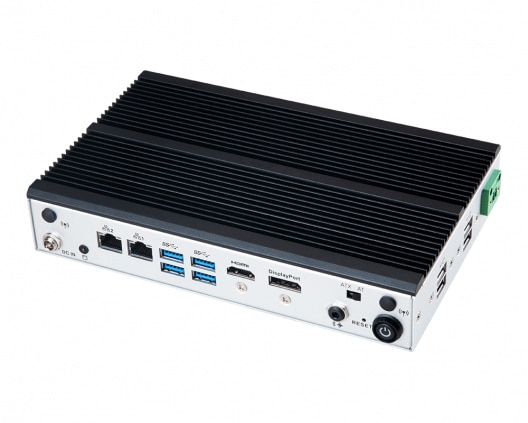
What is Edge Computing?
Posted on January 17, 2023
Edge computing as a buzzword has been going around for quite some time. But what exactly does edge computing mean, and why is it important?
Cloud Computing vs Edge Computing
When it comes to processing data on an industrial scale, two approaches can be taken. Both have their own set of strengths and weaknesses.
Cloud computing offloads the processing to remote data centers, where a centralized system performs all required tasks and then shares the results with the endpoint. This can often be outsourced to a third-party data center, further reducing the operational costs for a rapidly expanding business.
Edge computing, on the other hand, generates, stores and processes the data at the endpoint itself. The idea is to prioritize speed and reliability instead of being dependent on a centralized server over a spotty network.
The Problem With Cloud Computing
Declining network costs and improved communication technologies contributed to the rise of Cloud Computing. Many companies found it cheaper to outsource their data storage and processing to external servers like AWS (Amazon Web Services) rather than investing in their own facilities.
But cloud computing comes with its own challenges. There is always some delay in processing requests as the data has to be transmitted through the network. And most industrial applications cannot afford even a few milliseconds of delay.
Data security can also be a concern as the information is vulnerable to being intercepted, not to mention being held in third-party servers of questionable security. This is especially a concern if the data is sensitive in nature.
Is Edge Computing the Solution?
Thanks to a host of technological advances, embedded computers are more powerful than ever. The M.2 standard, a new generation of processors, and improved integrated graphics mean that you can get a high-performance system at a fraction of its earlier cost.
This has made Edge computing a viable alternative, and in some cases, the better one. Edge computing does not suffer from the lag intrinsic to cloud computing, or the cost associated with moving large amounts of data through the network.
Furthermore, data security is maintained by processing and storing the information locally. This also allows data-guzzling AI applications to be deployed on-site without worrying about bandwidth considerations.
A Reliable Framework
The greatest issue with cloud computing is how unreliable it can be. The highly centralized nature of the service means that all your eggs are in one basket, and any technical difficulties or network problems can halt all work.
Industrial applications can seldom afford these kinds of slowdowns and are better served with an edge computing platform. The independent functioning of every edge device means that failure only affects a single node, allowing the rest of the network to function normally.
This makes Edge computing the most reliable form of computing framework out there since it can handle network outages and technical faults with ease. And as the pandemic has taught us, reliability and resilience need to be prioritized in all industries.
Evolving Regulations
Data safety regulations were still being debated when cloud computing became a big thing. Over the years, however, fears of compromising private user data have given birth to more stringent data protection regulations.
Cloud computing makes compliance with such regulations tricky due to the distributed nature of the data. The information is ferried across data centers around the globe, with different laws and regulations applying to every geographical area.
With Edge computing, however, data security is pretty straightforward. As the data is processed and stored at the end-point itself, compliance with data security norms is a given. There is no risk of leaking private user data either, as the identifying information can be scrubbed on-site.
The Internet of Things
IoT is quickly transitioning from a buzzword to a practical technology. Sensors are being installed in all manner of locations, from warehouses to industrial floors. And these sensors are generating vast amounts of data every second.
Edge computing is necessary to keep up with this flood of information and analyze it in real-time. That it also saves on bandwidth and security costs is just the cherry on top.
This is why the new lineup of Nvidia GPUs comes with support for edge computing, facilitating the deployment of AI solutions in all kinds of settings. It is now possible to get a fanless embedded PC with a discrete GPU that is suitable for any IoT setup.
Is Edge Computing the Future?
While cloud computing still has its uses – in applications where latency is not an issue and minimal data is generated – edge computing has emerged as the superior alternative in every other scenario.
If done right, edge computing has better data security and lower operational costs than any comparable framework. The fact that edge computing remains as scalable as a cloud computing platform while being more resilient is also a big advantage.
And with enterprise solutions from Nvidia and Intel catering to the needs of edge computing, it is an easy decision to make. Even if your application currently does not implement IoT, using an edge computing platform future-proofs your investment.
